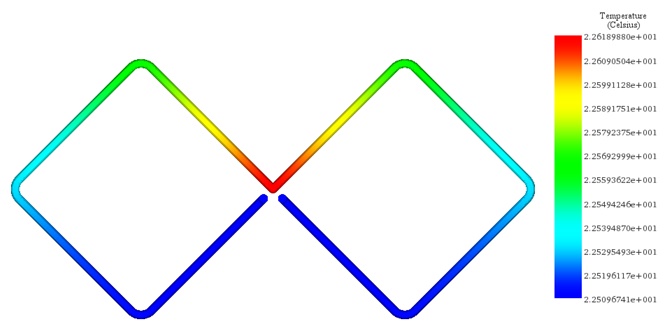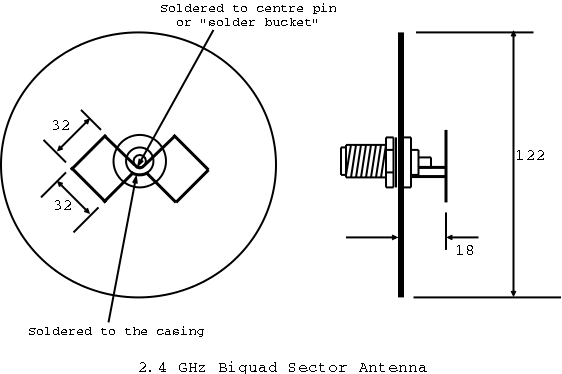

Whatthis means is that there is a whopping 5.48mm difference in the optimal probedistance between Channels 1 and 11, so if you are going to use the antenna on afixed channel, it's better to enter than channel number instead when running theprogram.Įxperimenting with my calculator program, I've found some interestinginformation. Now the interesting part is that if you wanted totune the waveguide for the center frequency of Channel 1, you would use a probedistance of 66.04mm instead, and for Channel 11, you would use 58.52mm. The TE11/TM01 Cutoff frequenciesgive us the approximate upper/lower frequencies of operation for our antenna.Since Channel 1 is centered at 2412MHz and Channel 11 is centered at 2462 MHz,we have a comfortable margin. The GuideWavelength is the wavelength of our waveguide.

The operating wavelength of 4.8' shows us thatwe don't have to worry that the sides of the can have ridges, because the theirdepth is insignificant compared to the wavelength our signal. So what's the meaning of all this gibberish? The probe should be 30.8mm(1.21') long, and should be set 63mm (2.5') from the inside of theback lid of the can. Lincomatic Circular Waveguide Calculator V1.1 (23:03:31) So to make an antenna optimized for Channel 6 using m圓.25' (82.55mm) diameter can, we would invoke it as follows: Let's go through an example using my calculator. On the otherhand, my calculator lets you tune your antenna for maximum gain on a specificchannel this is handy if you want to use your antenna set up a permanent pointto point link. Greg Rehm's calculator fixes the operating frequency at Channel 6 (2437MHz),which is the center channel in the USA, giving the best tradeoff if you want tobuild a general purpose antenna which works across Channels 1-11. In addition, Adam Lesser has kindly supplied a binary forOS-X.
DIY DOUBLE BIQUAD WIFI ANTENNA ARCHIVE
It's available on my freesoftware page the archive contains both a Win32 console-mode EXE and fullsource code. The result is my own cantennacalculator program, which I wrote in in C++, based on formulae obtained fromthe ARRL Antenna Book. Finding his online cantenna calculator rather intriguing, I set out tofind the mathematical roots to his calculations. I will not go into the construction details, as they are very well documentedon Greg Rehm'ssite.

The resultant methanegas produced from consuming the beans was used to power my soldering ironafterwards. I obtained my can by going to my local 99 Cents Only store and buying a can ofHeinz beans, which happened to be desired 3.25' diameter.
DIY DOUBLE BIQUAD WIFI ANTENNA SOFTWARE
However I highly recommend to follow my instructions, which are based on computer antenna simulation software 4nec2, to maximize performance.



 0 kommentar(er)
0 kommentar(er)
